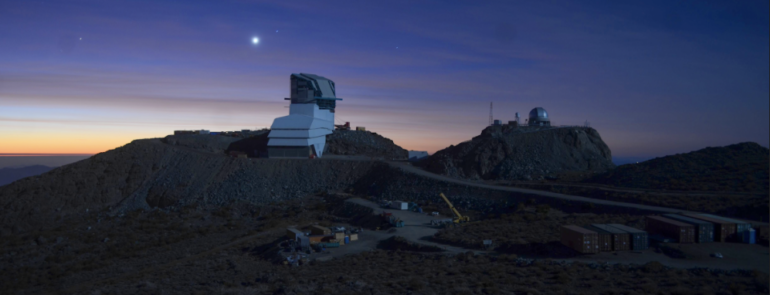Rubin Observatory at sunset, lit by a full moon. Rubin Observatory/NSF/AURA
Google Cloud said that the Vera C. Rubin Observatory will use its cloud services to host its Interim Data Facility, which will collect astronomical data.
The Interim Data Facility (IDF) will be hosted on Google Cloud in a three-year agreement. Until the Rubin telescope becomes operational in 2023, the IDF will collect pre-survey data in preparation for a full survey.
Robert Blum, acting director of the Vera C. Rubin Observatory Operations, said the Google Cloud assist is designed to help the scientific community prepare for full operation. “This the largest telescope plus camera ever built for astronomy. We will create a movie of the heavens, stars and galaxies and explore dark energy,” said Blum. The observatory is based in The observatory is located in the Cerro Pachón, Coquimbo Región, Chile.
Rubin Observatory plans to use the 8.4-meter Simonyi Survey Telescope and the gigapixel LSST Camera to capture 1,000 images of the sky every night for 10 years. The high-res images will contain data from roughly 20 billion galaxies. LSST Camera specs include:
27-ft (8.4-m) mirror, the width of a singles tennis court 3200 megapixel camera Each image the size of 40 full moons 37 billion stars and galaxies 10 year survey of the sky Up to 10 million alerts, 1000 pairs of exposures.
The Rubin-Google Cloud partnership was announced amid the cloud provider’s public sector summit. Mike Daniels, vice president of global public sector for Google Cloud, said the company is bringing applied artificial intelligence and machine learning to public sector organizations.
Key items in the pact:
Rubin IDF will process astronomical data and make it available to the scientific community. The collection is ahead of the launch of Rubin Observatory’s Legacy Survey of Space and Time (LSST), a 10-year survey. LSST will ultimately be a 500-petabyte set of data product and images. A cloud deployment was the best route to store images and data because there’s too much to deploy locally. The IDF will be used to deploy Rubin Science pipelines, which will convert pixel data into a database of stars and galaxies. The Rubin Observatory will use Google Cloud Storage, Kubernetes Engine, Google Cloud Compute as well as Google Workspace for scientist collaboration.
Google Cloud has landed a few astronomy projects including The Minor Planet Center, Zwicky Transient Facility (ZTF) at the Palomar Observatory in Southern California and the Event Horizon Telescope.
Related:



